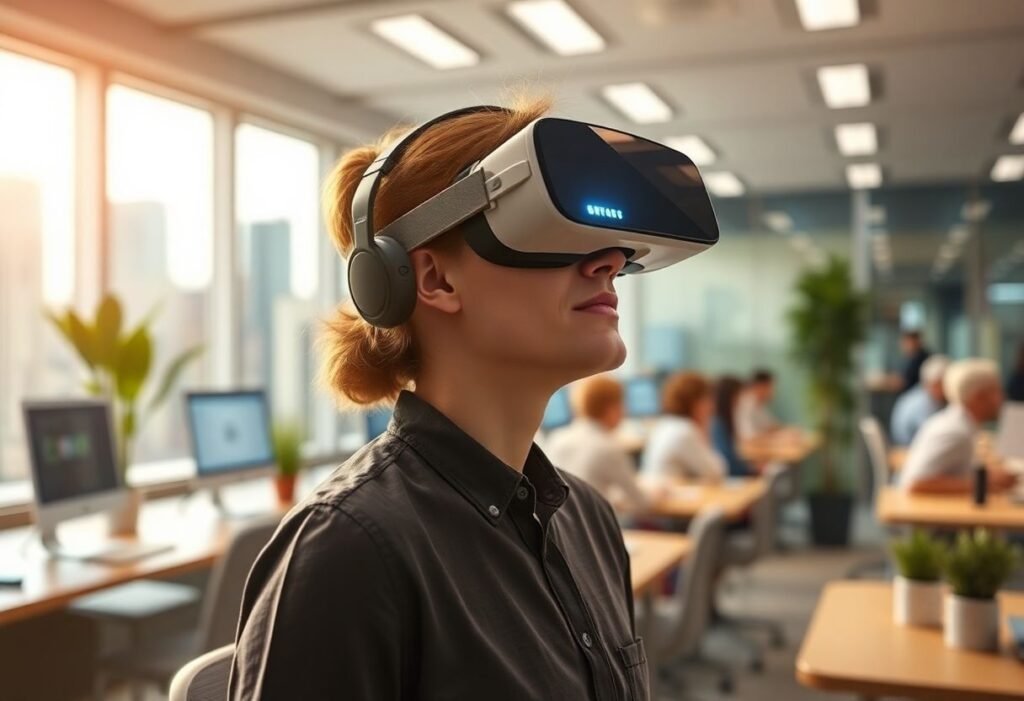Virtual reality (VR) is transforming the landscape of workplaces as we know them, providing innovative solutions that enhance collaboration, training, and productivity. This technology is not just a fad but a critical tool that shapes the future of work. As companies embrace virtual reality, they discover new possibilities for engagement and efficiency.
The Rise of Virtual Reality in Workspaces
Over the past decade, virtual reality has emerged as a significant player in workplace innovation. With applications ranging from remote collaboration to immersive training, VR offers unparalleled opportunities for businesses. Companies can create realistic simulations that provide employees with the experience they need to excel. By incorporating VR into their strategic vision, organizations are positioning themselves as leaders in technological advancements, ensuring that their teams are equipped to face the challenges of tomorrow.
Enhancing Collaboration Among Teams
One of the most remarkable aspects of virtual reality is its ability to connect remote teams. In an era where global collaboration is essential, VR enables employees to interact in a shared digital space, breaking the barriers of distance. These virtual work environments foster teamwork and creativity, allowing staff members to engage in real-time discussions, brainstorm ideas, and resolve conflicts without being physically present. This has led to increased productivity and satisfaction among team members, making VR an invaluable tool in modern workplaces.
Revolutionizing Employee Training and Development
Training programs are undergoing a paradigm shift thanks to virtual reality and its ability to create immersive learning experiences. Traditional training methods often struggle to hold attention, but VR captivates learners with engaging simulations and scenarios that reflect real-world challenges. Employees can practice their skills in a safe environment, receiving instant feedback that helps them improve. As a result, organizations see enhanced retention rates and a quicker pace of skill acquisition, which ultimately translates to better performance on the job.
Streamlining Operations with VR Solutions
Virtual reality is also streamlining various operational processes within organizations. From design and prototyping to product testing, VR allows teams to visualize concepts before they are physically created. This not only saves time and resources but also reduces the likelihood of costly mistakes. As organizations continue to adopt these innovative methods, they can remain competitive and responsive to market demands, shaping a more efficient future.
Promoting Diversity and Inclusion in the Workplace
Integrating virtual reality into corporate culture can significantly promote diversity and inclusion. VR offers tools for organizations to simulate scenarios that elevate awareness and understanding of different perspectives. This can lead to a more inclusive work environment where everyone feels valued and understood. By using VR as a training and awareness tool, businesses can foster a culture of respect and collaboration that benefits all employees.
Looking Ahead: The Future of Work with VR
As technology evolves, the role of virtual reality in workplaces is expected to grow even further. Organizations that invest in VR are likely to find themselves at the forefront of innovation, equipped to harness new technologies that facilitate remote work, skills training, and team collaboration. The ongoing digital transformation will continue to reshape how we perceive and engage in the workplace, making it indispensable for future-focused companies.
Disclaimer: The content provided is for informational purposes only and should not be considered professional advice.





















